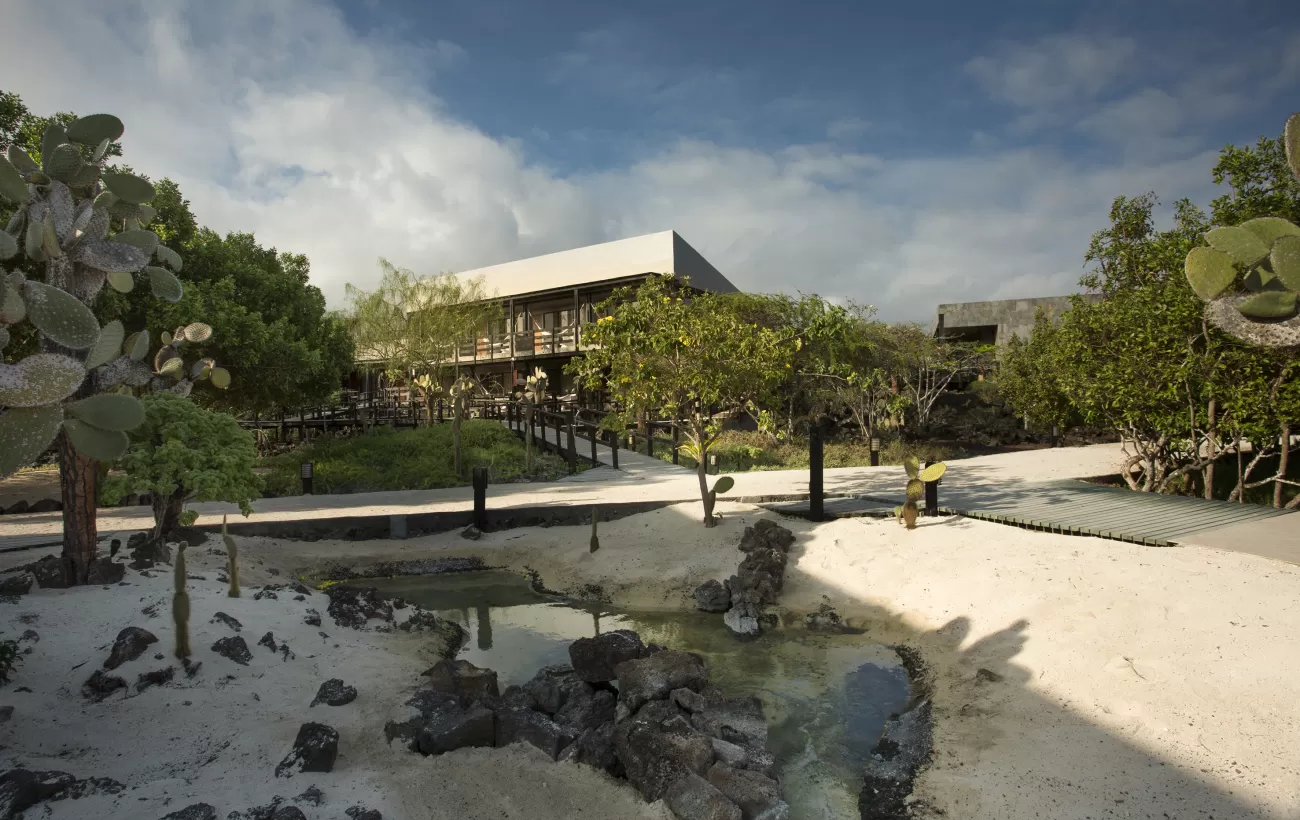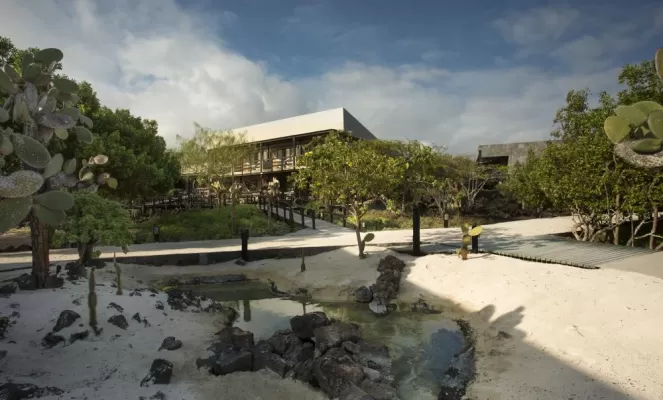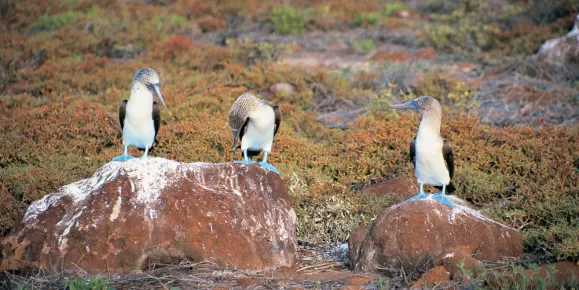Half-Day Land Excursion:
Divine Bay (Guided)
Located very close to Academy Bay and buzzy Puerto Ayora, you’ll find the quiet and wildlife-rich Divine Bay. Named after one of the island's first settlers, this beautiful cove is protected from the swells by natural reefs on one side, mangrove trees on the other and cliffs created by the uplift of the lava plateau. Divine Bay provides a wonderful natural shelter for wildlife, and kayaking is one of the best ways to discover it! Watch the herons cross the Bay and the noddy terns nesting in the cliffs alongside the blue-footed boobies. If you watch carefully, you might even spot a sea turtle grazing on the ocean floor or a curious young reef shark.
Full-Day Land Excursion Options:
Highlands: Giant Tortoises, Lava tunnels & Lunch (Guided)
Depart from the hotel towards the Highlands of Santa Cruz. A short drive across the farming area will lead us to El Manzanillo, which is located along the northern edge of the Giant Tortoise Reserve. El Manzanillo sits right on the natural path that tortoises take every year as they either migrate to higher, more humid locations during the Dry Season (June-September) or when they descend to the lowlands during the Hot Season. The Galapagos giant tortoise (Chelonoidis nigra) is the largest living tortoise species, weighing up to 250 kg (550 lb)! It plays an important biological role as the top grazer in its habitat. In the wild, these gentle giants slowly make their way through the dense foliage and bush of the highlands of Santa Cruz. The shape of their shell varies from island to island, too. Throughout the year on Santa Cruz, giant tortoises can be seen grazing on the surrounding vegetation, wallowing in muddy banks or in large ponds.
The area is teeming with life: chirping woodpecker mockingbirds, flycatchers, as well as ducks, herons and gallinules that all make this an exciting morning visit. On the way back to Puerto Ayora, visit one of the island’s lava tunnels – significant geological formations that take you back in time and allow you to learn about how lava flows shaped the islands. After this, have lunch at El Manzanillo.
Tortuga Bay, Charles Darwin Research Station & Lunch (Guided)
Tortuga Bay is a glorious beach that is located southwest of Puerto Ayora on Santa Cruz Island. Tortuga means “turtle” in Spanish and it was named as such due to the fact that sea turtles have made this one of their favorite places to come and lay their eggs! The stunning, white sand beach is considered by many to be the most beautiful stretch of coast in the Galapagos archipelago. Tortuga Bay is reached via a marked and cobbled 2 kilometer (1.2 mile) path that starts at the west end of Charles Binford Street, not all that far from Puerto Ayora itself. Guests must sign in and out at the National Park control point that sits at the beginning of the path. It is open daily from 6:00 AM to 6:30 PM. The trail and beach provide excellent birdwatching opportunities, with plenty of Darwin’s finches and other seabirds. The beach itself is a great place to go kayaking and/or snorkeling!
The headquarters of the Galapagos National Park Service and the Charles Darwin Research Station are located side-by-side, right on the edge of Puerto Ayora. Here, there is an interpretation center open to the public where you may also view their tortoise breeding program as well as giant tortoises in captivity. A visit to the Center is sure to expand your knowledge of this unique, iconic Galapagos animal as well as the ongoing conservation efforts in the islands.
Island Yacht Excursion Options:
North Seymour Island
North Seymour was lifted from the ocean floor by a seismic event, and its origins as a seabed give the island its low, flat profile. Cliffs only a few meters high form the shoreline, where swallow-tailed gulls sit among the ledges and rocks. A tiny forest of silver-grey Palo Santo trees stands just above the landing, usually without leaves, waiting for the rains to burst into bloom. This island is teeming with life!
Bartolome Island
Bartolome is famous for Pinnacle Rock, a towering spearheaded obelisk that rises from the ocean’s edge and is the best-known landmark in the islands. Galapagos penguins—the only species of penguin found north of the equator—walk precariously along narrow volcanic ledges at its base. Sea lions snooze on rocky platforms, ready to slide into the water to play with passing snorkelers.
South Plaza Island
South Plaza is a small island full of fascinating wildlife, both along its shore and along its dramatic, wind-swept cliffs: sea lions, land iguanas, swallow-tailed gulls, Opuntia cacti and vegetation that changes colors according to the season. South Plaza is one of Galapagos’ most impressive visiting sites.
Santa Fe Island
Santa Fe offers one of the more beautiful and sheltered coves in the islands. Its turquoise lagoon is protected by a peninsula of tiny islets forming an ideal anchorage. The island lies to the southeast of Santa Cruz within sight of Puerto Ayora. Like North Seymour, Santa Fe has been uplifted seismically, and you can see underwater lava formations.
























